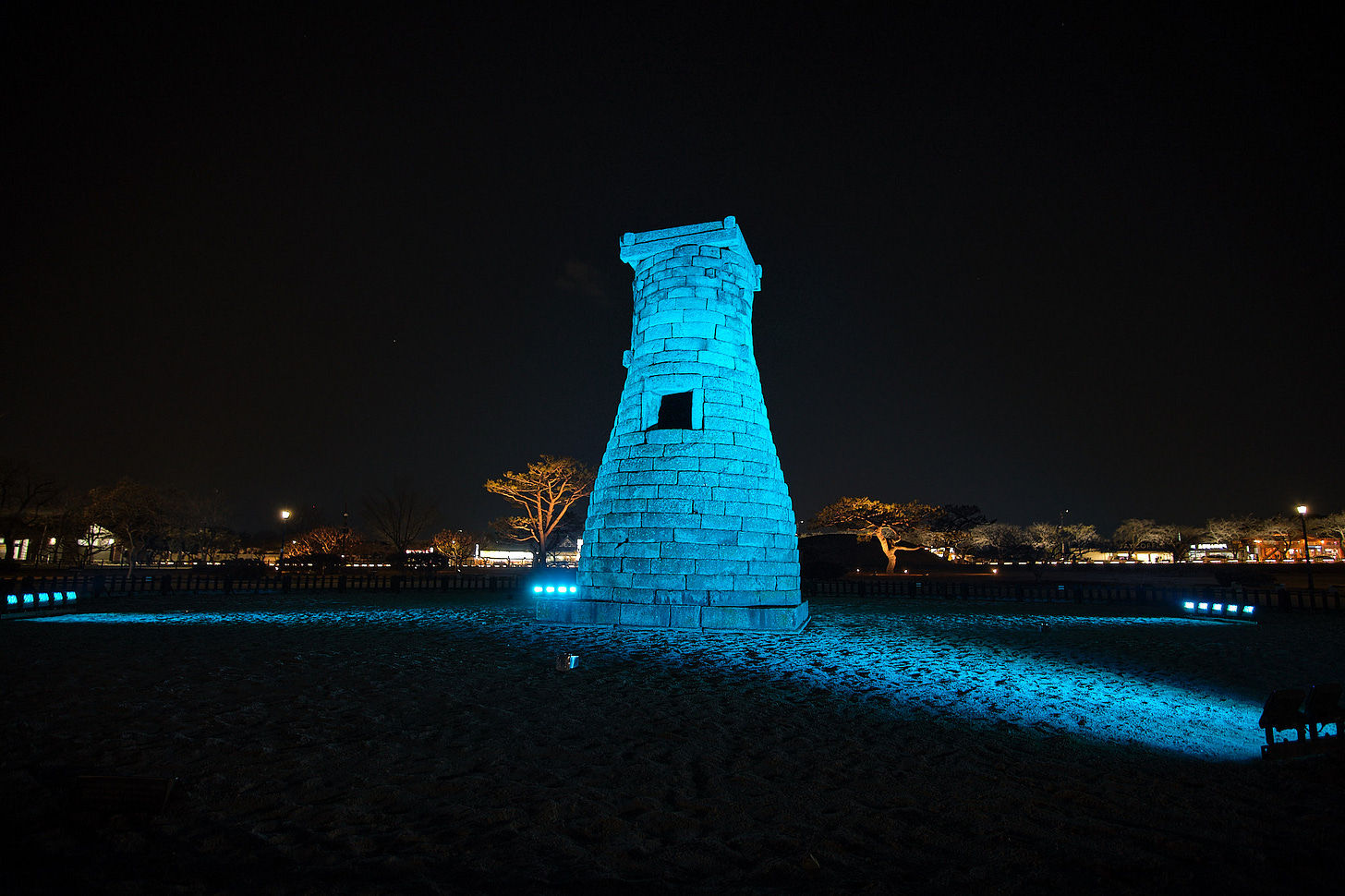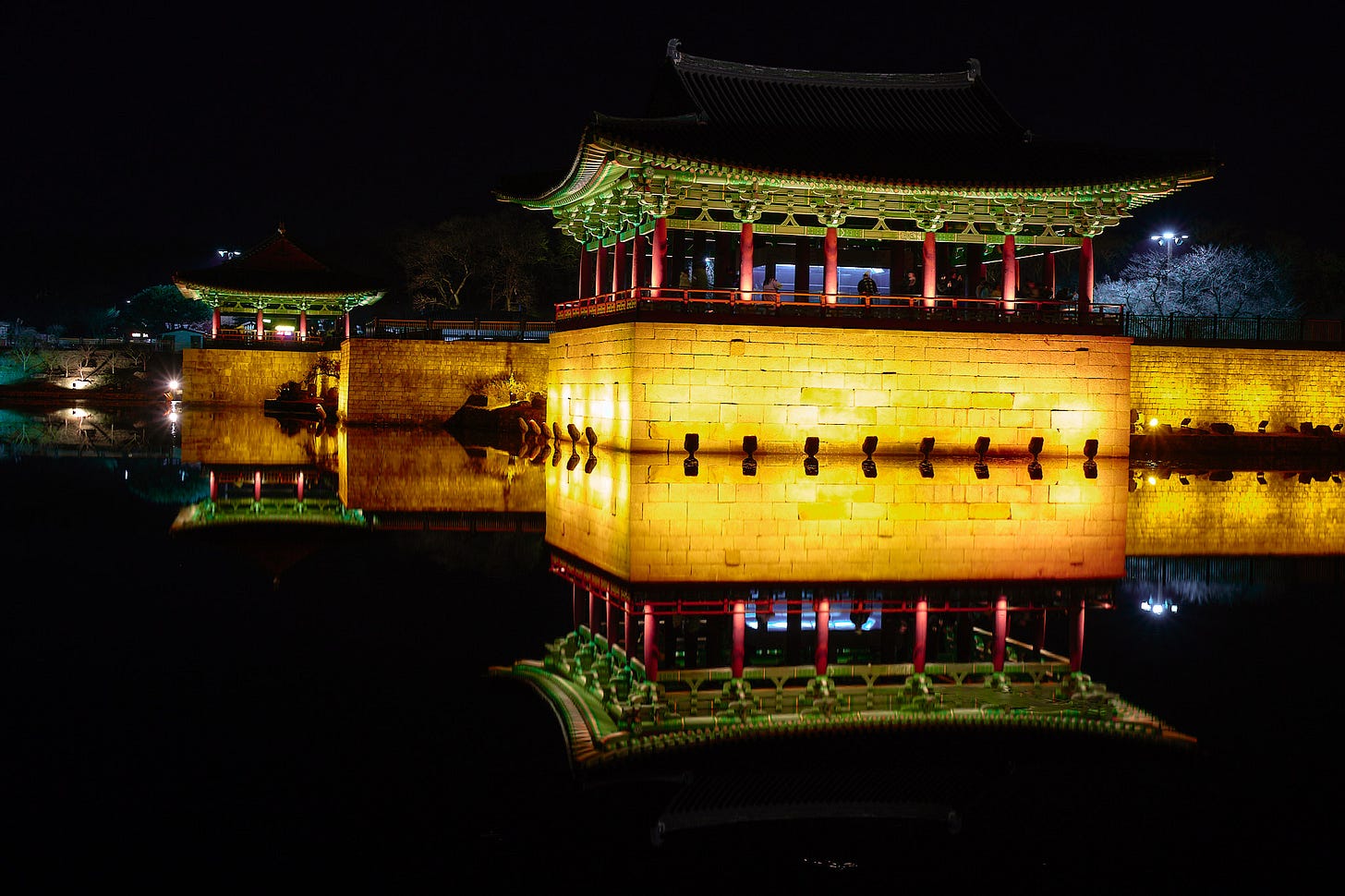Good morning, my friend! Another week has gone and we are here with a fresh new article. I tell you: I love working with Tamara on My Travel Diary Chronicles series. Reading about her travels, putting together the article and the images is a joy and a way for me to enjoy places I will probably never visit.
Today, she takes us to a magical city, where the presence of ancient tradition and thousand-year history can still be perceived and breathed at every step.
Make yourself comfortable and enjoy!
The scent of old wood and the muffled sound of my footsteps on the stone pavement.
Curved roofs, covered in black tiles, draw soft lines against the sky. Square windows look out over tidy courtyards, where the homeowners’ shoes rest in neat rows before sliding hanji paper doors. From the kitchens wafts the warm aroma of doenjang-jjigae1, while an old melody, playing from a vintage radio, blends with the cold northern wind.
In the understated elegance of wood, stone, and space lives the discreet harmony of tradition. But Gyeongju is not just a village of hanok2 houses — it was once the capital of the ancient Silla Kingdom, which ruled and unified the Korean peninsula for nearly a thousand years, starting from 57 BCE. Reminders of that past are everywhere, scattered among temples, royal tombs, and archaeological remains of extraordinary significance.
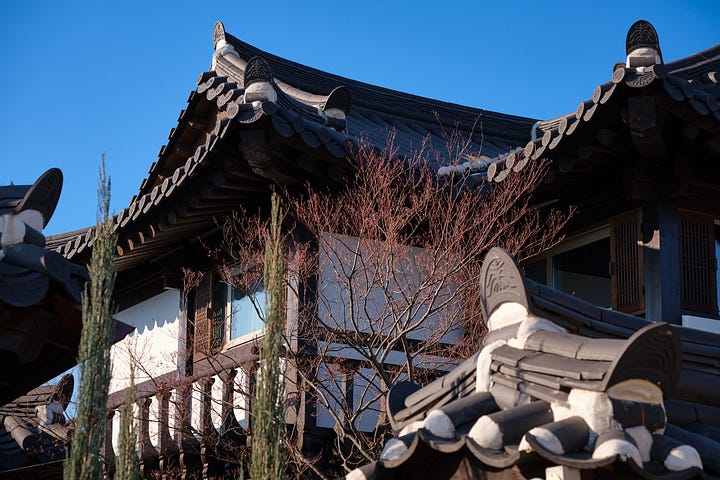
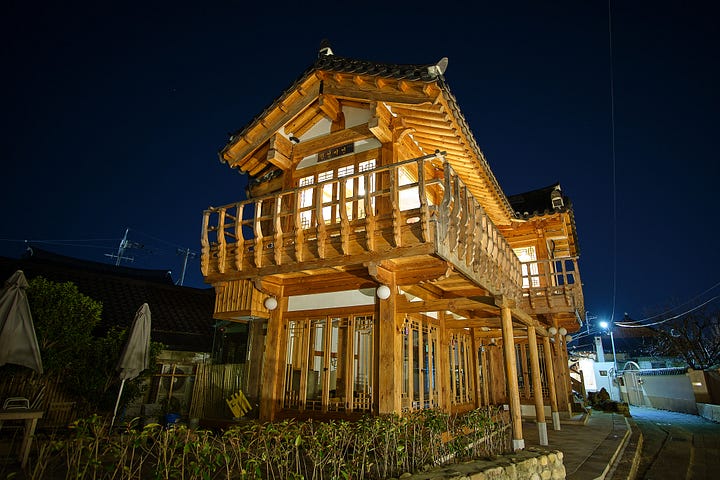
The following morning, the sun lights up the gray stone walls of the fortress, worn down by centuries of sieges and resistance. As I walk along the ramparts, I sense a solemn silence, broken only by the rustle of the wind through the trees.
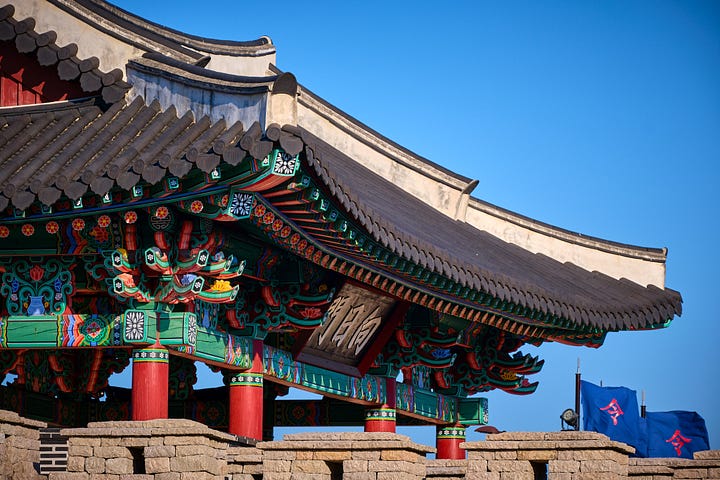
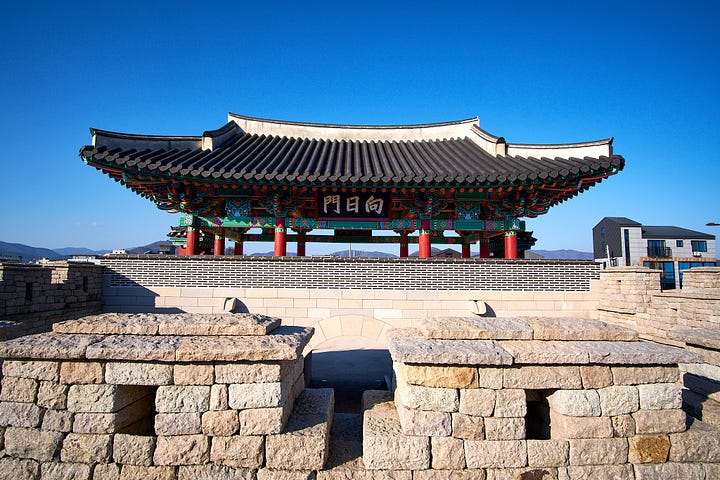
The present rushes back in with its vivid colors when I reach Seongdong Market. Shiny fruits, wriggling fish, and sticky rice cakes bring the stalls to life. A woman hands me a steaming hotteok3 with a smile that needs no translation. It’s the spontaneous hospitality of someone who has turned welcoming into an art form. In Korea, modernity and tradition do not cancel each other out — they observe, recognize, and respect one another.
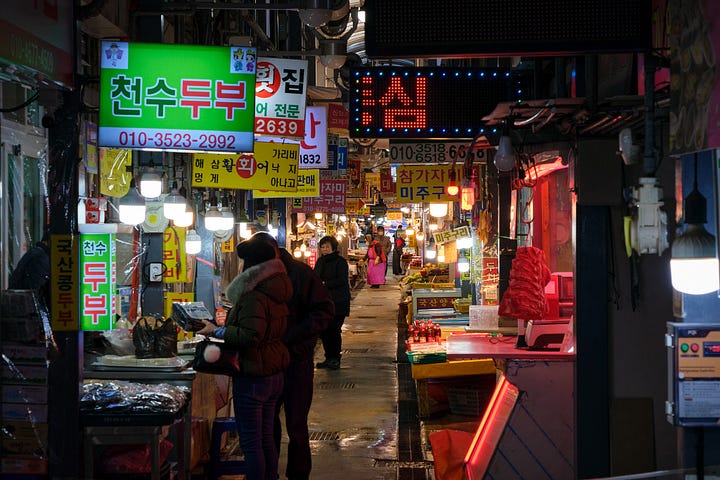
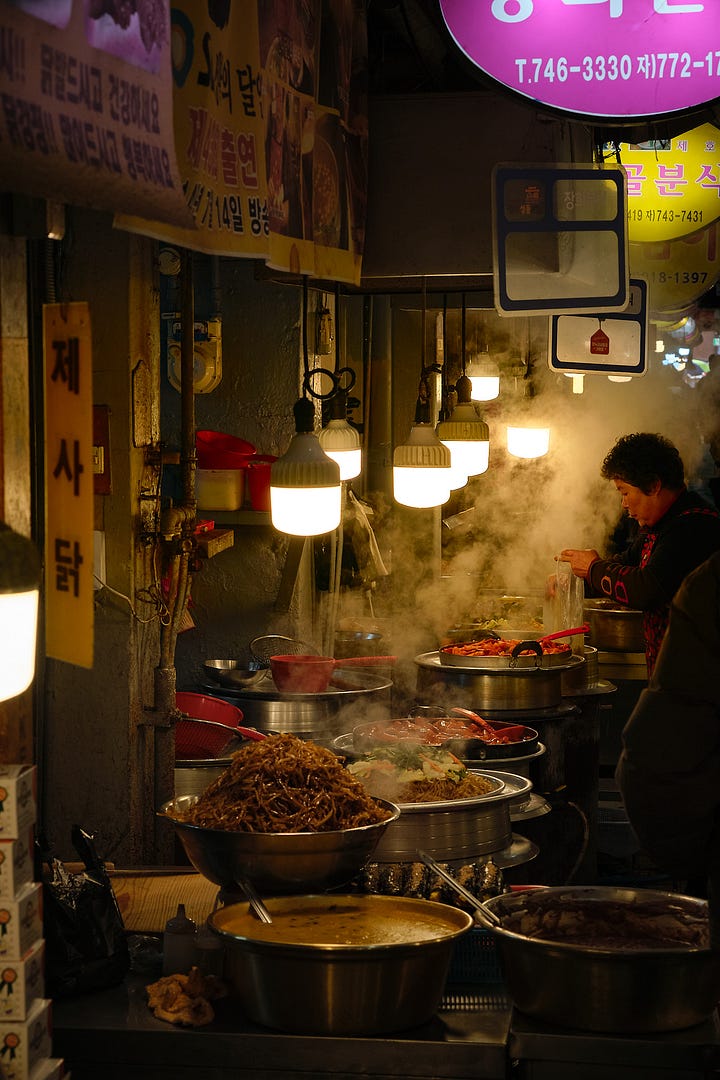
I understand this better as I walk down Hwangnidan-gil, a stylish street where the past is refracted through contemporary forms: artisan boutiques, design cafés, and art galleries.
In a tea house, soft light filters through wood-framed windows, weaving between the steam rising slowly from ceramic cups. The customers — mostly tourists — are enjoying a moment of rest. Here, the tea ceremony has become a modern form of meditation. Its roots lie in Buddhism and Confucianism, but today it speaks to anyone seeking a brief moment of mindful silence.
I arrive at the Daereungwon Tomb Complex, where history again demands space. In a quiet park, grassy mounds rise like small hills. In reality, they are royal tombs — here rest the kings and nobles of Silla, guarded by the earth and legend.
I descend into the Heavenly Horse Tomb, where beneath the surface the echo of an ancient burial is preserved: golden crowns, decorated belts, fragments of lives suspended in archaeological relics — sometimes indecipherable.
Even the Cheomseongdae Astronomical Tower retains an aura of mystery. It rises into the sky like a stone enigma. The oldest astronomical observatory in Asia still seems to be watching the heavens, listening to the stars.
And like stars, the lights reflect on the water beneath Woljeonggyo Bridge. Between its fiery red columns and finely carved green beams, the hues of sunset dissolve like watercolors on the horizon.
At a slow pace, I admire the motifs of ancient symbols, walking across the long shadows stretching over the pale wood planks beneath my feet.
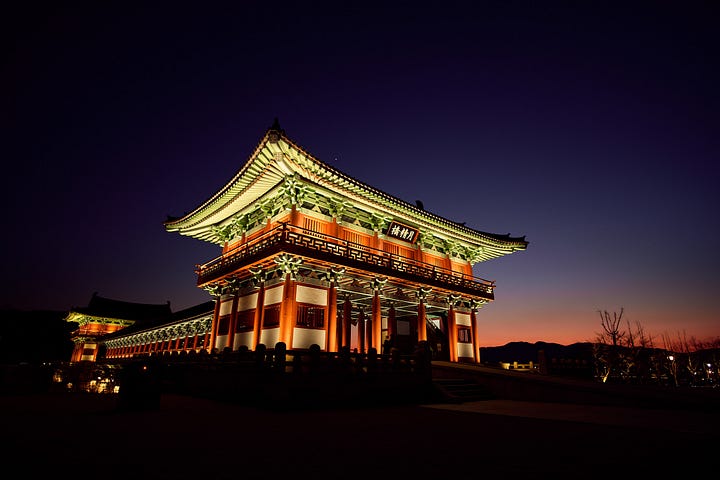
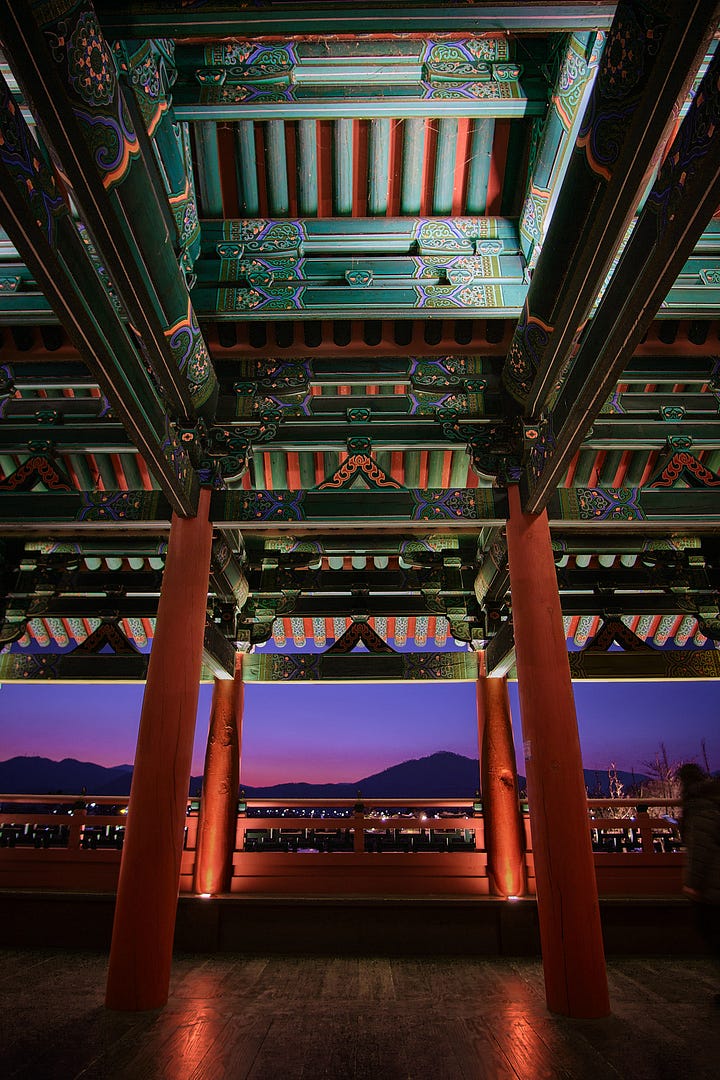
As night takes over, I reach Donggung Palace and Wolji Pond. Here, darkness becomes the companion of the golden light enveloping the pavilions. Lanterns flicker gently, reflections dance on the dark water. The curved roofs are perfectly mirrored in the pond, like a double vision of the past.
This place embodies the grandeur of the Silla court: here princes once strolled, here banquets were held, and the future of a nation was dreamed. And in that still reflection, between light and shadow, the thousand-year-old story of Gyeongju seems to have never stopped.
The next day, I leave the city center to climb the wooded slopes of Mount Toham.
I walk over moss-covered stones, under maple and pine trees, until I reach the imposing stone staircase leading to — a masterpiece of Buddhist architecture and spiritual center of the Silla Kingdom.
The complex unfolds across the mountainside like a mandala: raised terraces, hidden courtyards, and wooden pavilions finely decorated. In the central courtyard, two stone pagodas embody spiritual richness and the simplicity of enlightenment.
Beams of light filter through colorful lanterns, while small paper cards with wishes and prayers sway gently beneath the beams.

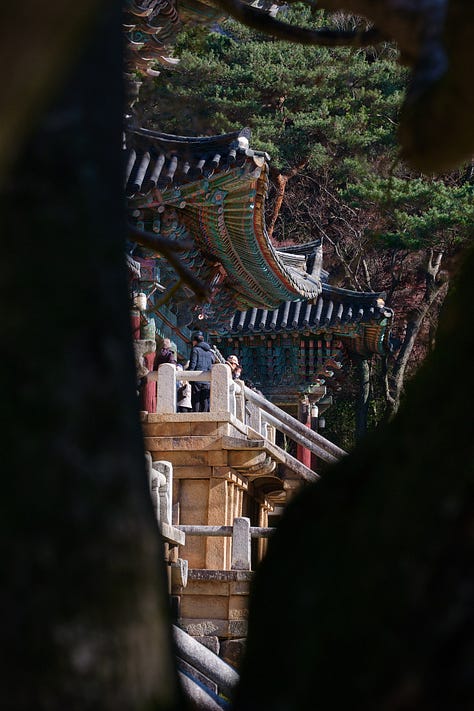
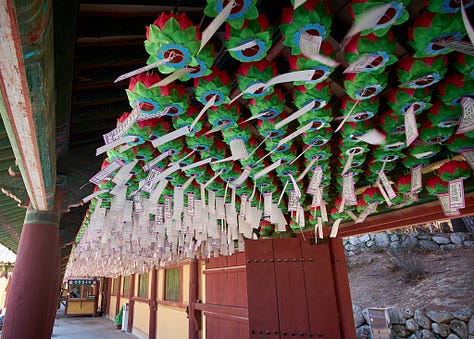
The two bridges that lead to the heart of the complex symbolize the transition from the earthly world to the spiritual one — crossing them feels like leaving the material world behind and stepping into a higher dimension.
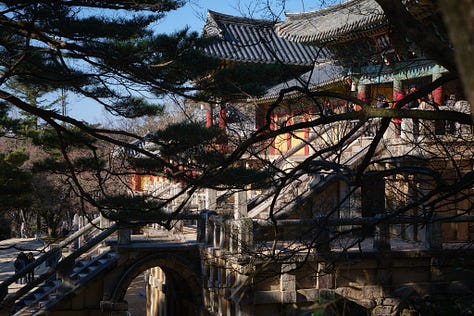
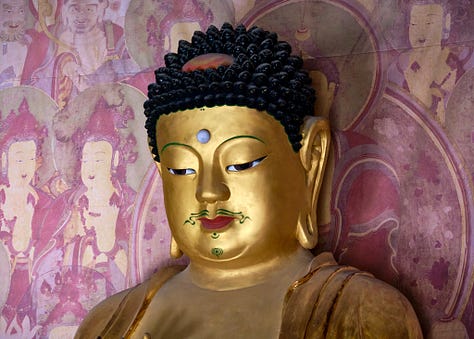
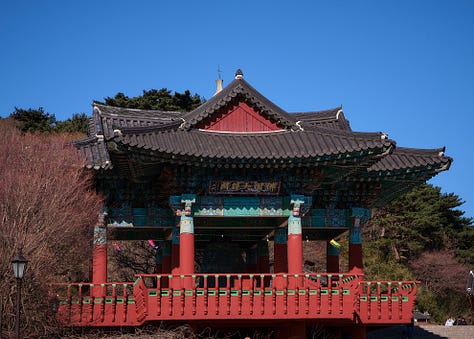
I continue along the ascending path until I reach the Seokguram Grotto.
In a silent chamber carved into the rock, a meditating Buddha sits — serene and still, surrounded by guardian deities.
From the threshold, the gaze opens onto a vast horizon: the same view the monks once admired at dawn during their daily ritual, in deep communion with nature and spirit.
Here, the legacy of the Silla Kingdom still lives: refined technique, architectural harmony, and devotion converge in a work that, more than a millennium later, continues to inspire a sense of wonder and incorruptible peace.
Take care and talk soon!
Traditional Korean stew made from doenjang (soybean paste) with vegetables, fish and meat.
Traditional Korean wooden house, characterized by curved roofs and harmony with the natural environment.
Glutinous rice flour pancakes, with a warm filling of sugar, cinnamon and dried fruit.






